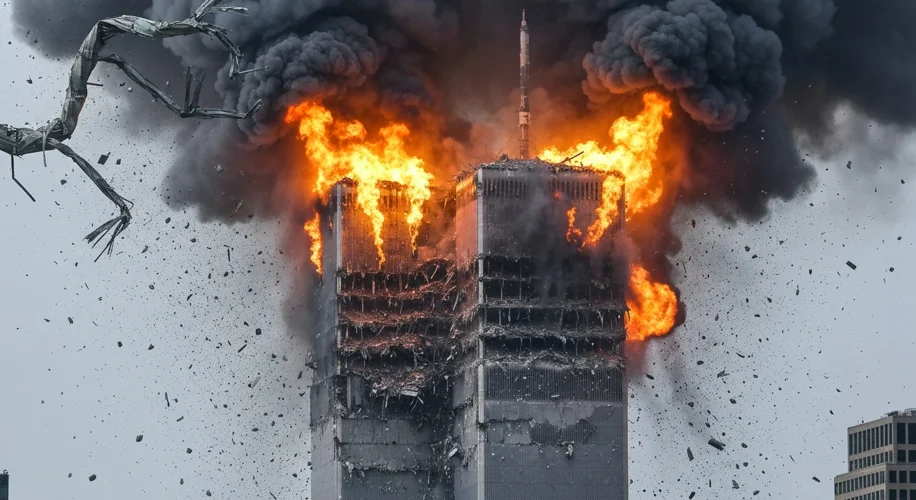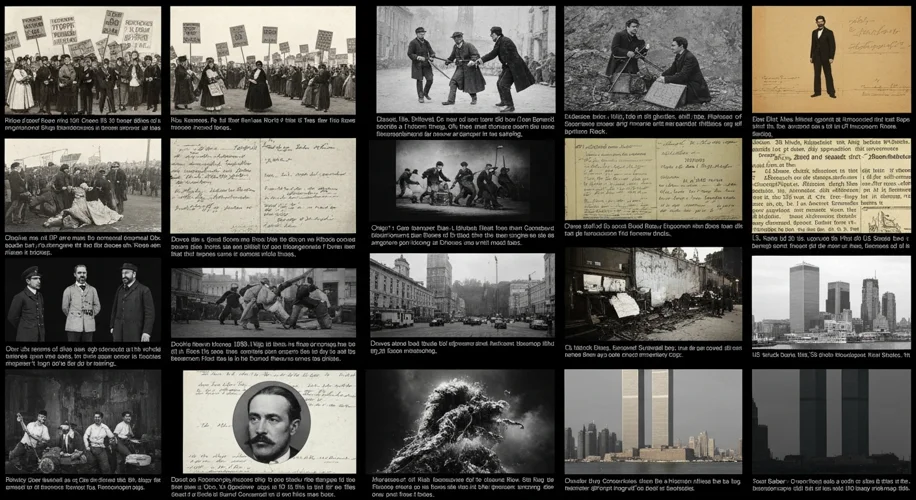The United States, a beacon of liberty and a land of opportunity, has at various points in its history been cast in the long shadow of terrorism. From the nascent days of the republic to the complex challenges of the 21st century, acts of violence intended to sow fear and destabilize society have left an indelible mark. But alongside these acts of terror, a parallel history has unfolded: the evolution of American counter-terrorism strategies, a constant, often reactive, struggle to protect its citizens and its way of life.
The Unsettling Dawn: Early Seeds of Terror
Long before the term “terrorism” entered common parlance, the young United States grappled with political violence. The late 18th century, a period still reeling from the revolutionary fervor, saw incidents that, while perhaps not fitting the modern definition, certainly bore the hallmarks of politically motivated attacks. The Whiskey Rebellion (1791-1794), though primarily an agrarian protest against federal excise taxes, involved armed resistance and the targeting of tax collectors, acts that threatened the very stability of the new government.

These early challenges were met with the nascent tools of a young nation’s authority. The federal government asserted its power, demonstrating its resolve to maintain order and enforce laws, a foundational principle that would guide future responses to internal threats.
The Anarchist Scare and the Rise of Modern Terrorism
As the nation industrialized and urbanized in the late 19th and early 20th centuries, new social and political forces emerged, bringing with them new forms of extremism. The rise of anarchist movements, fueled by radical ideologies and immigrant discontent, brought a wave of bombings and assassinations. Figures like Emma Goldman, though often misunderstood and unfairly maligned, were associated with a movement that, at its fringes, embraced violent tactics. The 1919 “May Day” bombings, targeting prominent Americans, and the assassination of President William McKinley in 1901 by Leon Czolgosz, a self-proclaimed anarchist, sent shockwaves through the country.
These events spurred the first significant federal counter-terrorism efforts. The Bureau of Investigation, the precursor to the FBI, was established in 1908, partly in response to these threats. Legislation was passed to deport “undesirables,” and surveillance of radical groups intensified. This era marked a crucial shift, as the government began to institutionalize its response to politically motivated violence.
The Long Shadow of the Cold War: Ideological Battlegrounds
The Cold War, a global struggle between the United States and the Soviet Union, cast a long shadow over domestic security. While the primary threat was perceived as ideological subversion and espionage, proxy conflicts and the rise of international terrorist groups often spilled onto American soil. Groups like the Palestine Liberation Organization (PLO) and various left-wing and right-wing extremist factions engaged in acts of violence, often with international connections.
The United States responded by expanding its intelligence capabilities. The CIA’s role in foreign counter-terrorism operations grew, and domestically, the FBI’s counter-terrorism division was strengthened. The focus was often on foreign-sponsored terrorism and domestic radical movements, including the Ku Klux Klan and various anti-government militias.
The Age of Global Terrorism: From Lockerbie to 9/11
The late 20th century witnessed a dramatic escalation in international terrorism, with devastating attacks that directly impacted American interests and citizens. The bombing of Pan Am Flight 103 over Lockerbie, Scotland, in 1988, a Libyan-sponsored attack that killed 270 people, including 190 Americans, starkly illustrated the global reach of terror. The 1993 World Trade Center bombing, carried out by al-Qaeda operatives, was a chilling precursor to what was to come.

These events led to increased international cooperation in counter-terrorism and the development of specialized units within the U.S. military and law enforcement. However, the scale and audacity of the September 11, 2001 attacks would fundamentally reshape American counter-terrorism.
9/11 and the Dawn of a New Era
The attacks of September 11, 2001, orchestrated by al-Qaeda, represented a seismic shift in the history of terrorism in the United States. The coordinated hijackings of four commercial airplanes, resulting in nearly 3,000 deaths and the destruction of the World Trade Center and significant damage to the Pentagon, shattered the nation’s sense of security. The sheer scale, the symbolic targets, and the intent to inflict mass casualties marked a new, terrifying chapter.

The response was swift and far-reaching. The creation of the Department of Homeland Security in 2002 consolidated numerous federal agencies under one umbrella, tasked with preventing future attacks. The PATRIOT Act, passed in the wake of 9/11, expanded government surveillance powers, a move that sparked intense debate about civil liberties versus national security.
The “War on Terror” was declared, leading to military interventions in Afghanistan and Iraq, aimed at dismantling terrorist organizations and their state sponsors. The focus shifted to preemptive action, intelligence gathering, and the disruption of terrorist financing. Special forces, drone warfare, and cyber counter-terrorism became increasingly important tools in the arsenal.
Evolving Threats, Evolving Responses
Today, the landscape of terrorism continues to evolve. While large-scale international plots remain a concern, the rise of “lone wolf” attackers, inspired by extremist ideologies disseminated online, presents a new and complex challenge. Domestic extremism, fueled by political polarization and social grievances, has also become a significant focus for counter-terrorism agencies.
Counter-terrorism strategies have adapted, emphasizing community engagement, de-radicalization programs, and the monitoring of online radicalization. The balance between security and liberty remains a constant negotiation, with ongoing debates about the effectiveness and ethics of surveillance, data collection, and law enforcement tactics.
The history of terrorism and counter-terrorism in the United States is a story of resilience, adaptation, and an ongoing struggle to safeguard the ideals of freedom and democracy against those who seek to undermine them. It is a narrative etched in moments of tragedy and defiance, a testament to the enduring strength of a nation tested by shadows, yet committed to protecting its light.

